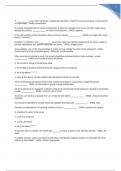Examen
Solution of recap question chapter 1 Economics of monetary integration
- Établissement
- Katholieke Universiteit Leuven (KU Leuven)
The document consists of a detaile solution to essay question from Chapter 1 which are going to be asked on exam.The answers are on average 150 -300 words explained and reasoned well.Also,the answer of the questions illustrated with graphs in exercieses demanded it.
[Montrer plus]












